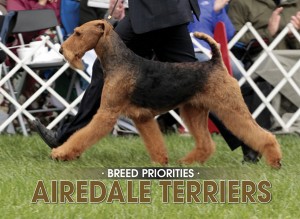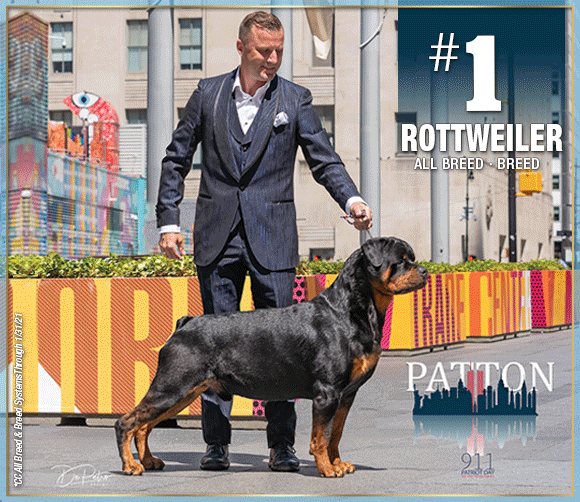Breed Priorities – Airedale Terriers
Click here to read the complete article
 By Nikki Riggsbee
By Nikki Riggsbee
Note: This article is not intended to promote fault or part judging. Nor is it to imply that any characteristic called for in the standard is unimportant. Judging, and breeding, is about prioritizing and about what the judge or breeder will forgive. Discussing priorities can help in learning how to better evaluate a breed. Questions, Comments, or Concerns??Contact AKC?Judge Ms. Nikki?Riggsbee at this email address:?Nriggsbee@aol.com
The Airedale Terrier is called the “King of Terriers” and is the largest Terrier breed. Developed in the Aire Valley in northern England, the Airedale claims many other Terrier breeds plus the Otterhound and possibly some sporting breeds in its history. The breed has been used for many jobs, including ratting, hunting, herding, guardian, in military and police work, as well as being a companion and competing in dog sports. It was one of the early breeds recognized by AKC and currently ranks 60th in registration.
We found twenty Airedale breeder-judges to invite to take a survey on their breed’s pri-orities. Sixteen agreed to par-ticipate, and thirteen completed surveys were received. Those who did the survey had been in the breed for more than forty years on average and had been judging the breed for nearly fifteen years on average. More than half have judged their national speci-alty, and most have judged other Airedale specialties.
Airedale Terrier Virtues
The breeder-judges prioritized a set of characteristics taken from their standard from most important to least. The list below is in sequence by the average rankings, with 1 being the most important.
1. Back short, strong, level
2. Shoulders long, sloping well into back
3. Eyes dark, small, not prominent, full of terrier expression
4. Foreface well filled before eyes
5. Movement free
6. Little difference between length of skull and foreface
7. Root of tail set well up on back
8. Hindquarters strong, muscular
9. Chest deep, not broad
10. Neck moderate length
11. Coat hard, dense, wiry
12. Bite level or scissors
13. V-shaped ears, carriage to the side of the head
14. Hocks well let down, parallel with each other
15. Topline of ear above level of skull
16. Small, round feet
Click here to read the complete article

Short URL: http://caninechronicle.com/?p=198104
Comments are closed











